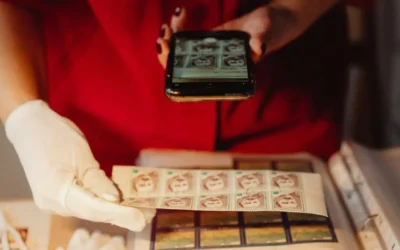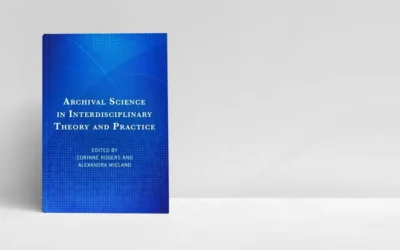Connection with Users and Within Collections
Margot Note
Archives, both grand and practical, are part of a longstanding story of human knowledge and experience. Archivists and key stakeholders at repositories should re-envision and revitalize special collections programming in the archives.
A range of programs can represent changing practices at a certain point in time. More importantly, they can raise the visibility of the professionals managing archival departments and conducting archival projects. When programming and outreach are shared through public relations, it can foster professional exchange around archival programming. Engaging outreach programs and thoughtful reference services allow archival repositories to connect with their users and forge connections between materials in their holdings.
From Static to Dynamic
The changing perceptions of archives from static repositories to dynamic networking institutions are driving some of the access and collection management expectations. In some cases, archival departments are moving away from typical exhibits to more interactive and imaginative outreach models, although exhibits and lecture series continue to be popular with the community. The amount of creativity and imagination depends on the organizational culture of the archives, the open-mindedness of its decision-makers, and the communities that the archives currently works with and hopes to attract.
Archivists are engaging their communities while increasing the use of their collections and, in some cases, augmenting those collections. If no one is using the materials, collections become dead: collecting for collecting’s sake. Most archivists are pleased when researchers use their collections and get excited about contents or make a remarkable discovery. This enthusiasm is infectious and re-energizes archivists in their work.
Deeper Connections with Materials
While “connection” typically means connecting with external users or institutions, deeper archival connections can also be forged within collections. Archival holdings are organized with the principles of original order and provenance. This organizational structure has a logic and rationale that makes sense to archivists and historians. However, standard archival practices can be limiting, confusing, or quite frankly odd to researchers who may be more used to searching by subject or theme.
Experiment with ways for users to explore your collections, much in the same way that patrons seek out a specific book on the shelves, yet browse books with similar call numbers. Look over your collections. What are the themes that emerge from the holdings? Is there a way to present them to users to spark exploration? For example, if a user is looking at a finding aid online, does your website suggest other finding aids with similar themes? Can they suggest similar digital items?
Connecting with New Archival Researchers
For novice users, common archival practices can be intimidating. Instead, think of the ways of exploration within the collections similar to what new users may be used to. By acknowledging that new users can feel daunted by researching archival collections, archivists can consider making the archives more welcoming to first-time visitors. Information seeking is a subjective process in which people approach with prior knowledge, strong opinions, and differing levels of cognitive development. Most users may not be familiar with best practices, so develop ways to impart this information in an easily understandable way.
Strategic Alliances
The better archivists understand their constituents, the better they can serve them. Archivists interested in connecting with users should assess their access policies, make outreach plans, and consider instruction methods that they could implement at their institutions to move from service providers to effective educators. They should look for partners with whom they can collaborate and discover the most needed knowledge and skills. Archivists and their users should align as information literacy participants and agents in teaching, learning, and practice. Strategic alliances between archivists and their patrons, developed over time, can establish information literacy and research methods as a foundation for lifelong learning. By doing so, archivists can gain a new generation of loyal users and advocates.
Margot Note
If you’re interested in this topic and eager to learn more, please join us for “Reach New Archival Audiences: Prioritize Connection”, the second in a new series being presented by Margot Note. It’s on Wednesday, February 16, 2022 at 11 a.m. Pacific, 2 p.m. Eastern. (Can’t make it? Register anyway and we’ll send you a link to the recording and slides afterwards). Register now or call 604-278-6717. And check out ArchivEra, our archival collections management software built for today’s challenges and tomorrow’s opportunities.
Similar Posts
Ensuring Long-Term Access to Digital Archives
Long-term preservation is essential to ensure digital archives remain accessible and usable.
5 Best Practices for Personal Digital Archiving
Archivists have developed best practices for organizing and maintaining personal digital archives, safeguarding digital legacies for future generations.
Interview with the Editors: Wieland and Rogers on Interdisciplinary Archival Science
Alexandra Wieland and Corinne Rogers co-edited Archival Science in Interdisciplinary Theory and Practice. My interview with them is below.
The Importance of Personal Digital Archiving (Plus Steps to Get Started)
Archivists often help individuals manage and preserve digital files of personal significance.




Leave a Comment
Comments are reviewed and must adhere to our comments policy.
0 Comments